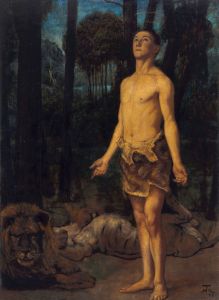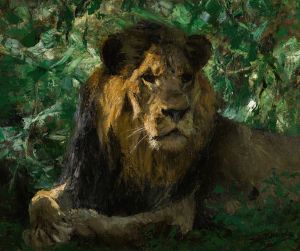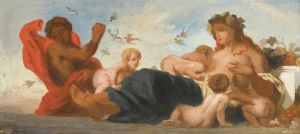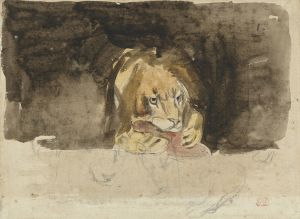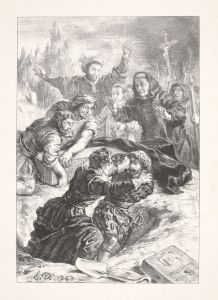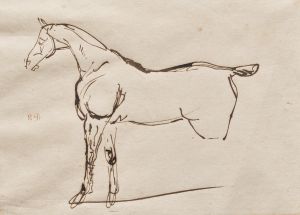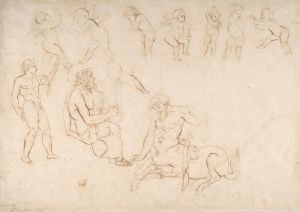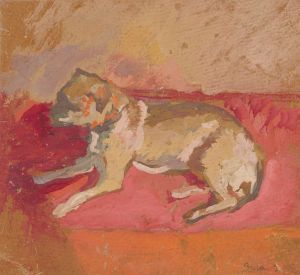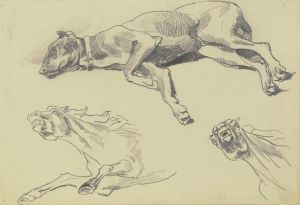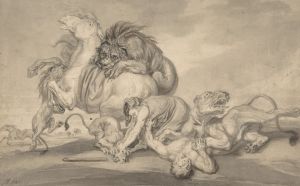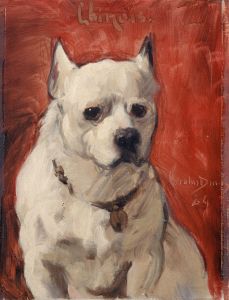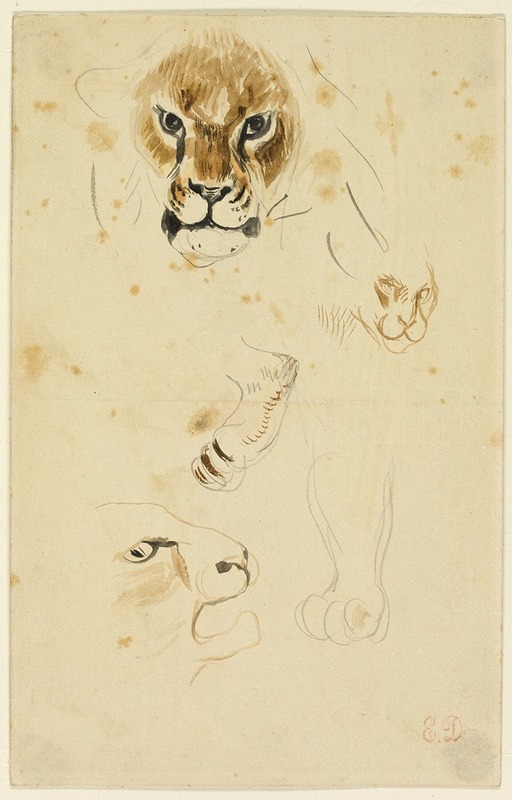
Heads and Paws of Lions
A hand-painted replica of Eugène Delacroix’s masterpiece Heads and Paws of Lions, meticulously crafted by professional artists to capture the true essence of the original. Each piece is created with museum-quality canvas and rare mineral pigments, carefully painted by experienced artists with delicate brushstrokes and rich, layered colors to perfectly recreate the texture of the original artwork. Unlike machine-printed reproductions, this hand-painted version brings the painting to life, infused with the artist’s emotions and skill in every stroke. Whether for personal collection or home decoration, it instantly elevates the artistic atmosphere of any space.
Eugène Delacroix, a leading figure of the French Romantic movement, is renowned for his expressive brushwork and vibrant use of color. Among his diverse body of work, "Heads and Paws of Lions" stands out as a testament to his fascination with the animal kingdom and his skill in capturing the essence of his subjects with dynamic realism.
Delacroix's interest in animals, particularly lions, was part of a broader Romantic fascination with the exotic and the untamed aspects of nature. This interest was likely influenced by his visits to the Jardin des Plantes in Paris, where he had the opportunity to observe and sketch various animals, including lions. These studies allowed Delacroix to explore the anatomy and movement of these majestic creatures, which he later incorporated into his paintings.
"Heads and Paws of Lions" is a study that reflects Delacroix's meticulous attention to detail and his ability to convey the power and grace of lions. The artwork is characterized by its focus on the anatomical features of the lions, highlighting their muscular structure and the expressive quality of their faces. Delacroix's use of bold, sweeping brushstrokes and a rich palette of colors brings a sense of vitality and immediacy to the piece, capturing the viewer's attention and evoking a sense of awe.
The painting serves as an example of Delacroix's broader artistic philosophy, which emphasized the importance of emotion and movement in art. He believed that art should not merely replicate reality but should also evoke the viewer's imagination and emotions. In "Heads and Paws of Lions," Delacroix achieves this by focusing on the dynamic aspects of the lions, portraying them not just as static subjects but as living, breathing creatures full of energy and life.
Delacroix's studies of lions and other animals were not only exercises in artistic skill but also reflections of his interest in the natural world and its representation in art. His work in this area contributed to the Romantic movement's exploration of themes such as the sublime, the exotic, and the intersection of humanity and nature.
While "Heads and Paws of Lions" may not be as widely known as some of Delacroix's other works, such as "Liberty Leading the People," it remains an important part of his oeuvre, showcasing his ability to blend observation with imagination. The painting is a testament to Delacroix's enduring legacy as an artist who pushed the boundaries of traditional art and paved the way for future generations of artists to explore new themes and techniques.
In summary, "Heads and Paws of Lions" by Eugène Delacroix is a compelling study that highlights the artist's fascination with the natural world and his skill in capturing the essence of his subjects. Through his dynamic brushwork and keen attention to detail, Delacroix brings the lions to life, offering viewers a glimpse into the power and beauty of these magnificent creatures.





